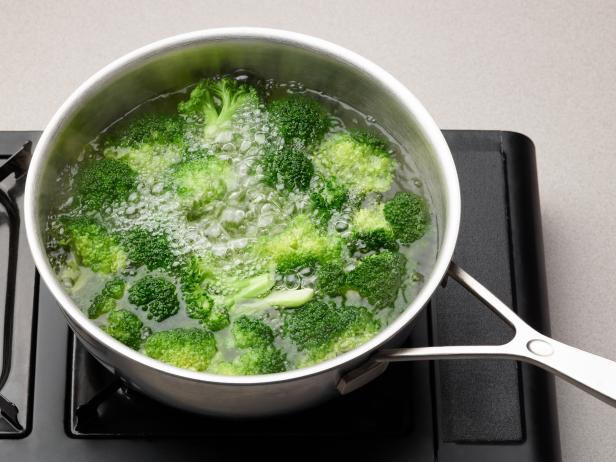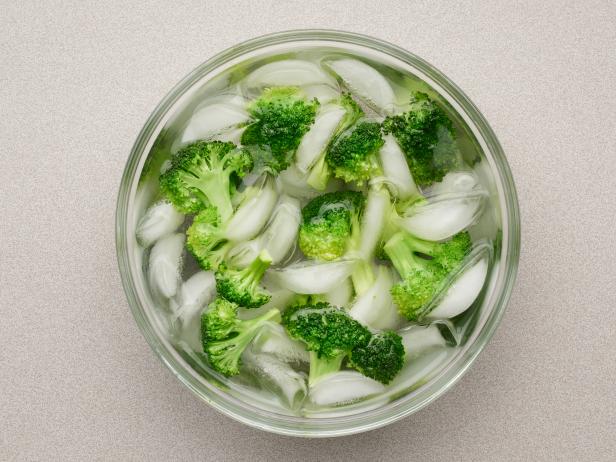As a working parent, steamed broccoli is an easy go-to veggie for me to serve my kids on a busy school night. Unlike me, my kids hate roasted broccoli. They claim it tastes bitter, and they aren’t necessarily wrong. Roasting tends to concentrate the bitterness of broccoli. Personally, I like that. My kids? Not so much.
More often than not, when I’m steaming broccoli, I have a bad habit of leaving it unattended and inevitably, I overcook it. But then a funny thing happened. After making this “mistake” quite a few times, my kids declared that they preferred eating broccoli in this way. I wasn’t necessarily shocked — overcooked broccoli does have a delicate flavor and an almost creamy texture. After eating it a few times with a little melted butter and some salt and pepper (see picture above), I began to understand the accidental charm of this mushy side dish.
Now, I am in no way claiming credit for overcooked broccoli. In fact, Italians have a famous pasta dish called Broccoli Ripassati that revolves entirely around the mushy vegetable. In its simplest form, the dish consists of overcooked broccoli sauteed with garlic; the broccoli is then mashed with pasta water and tossed with any kind of pasta (spaghetti and orecchiette tend to be the most popular) and Parmesan cheese. It can also be dressed up with some ricotta cheese, cream, crushed red pepper or anchovy filets. Though it’s not a dish you’ll find on many restaurant menus in Italy — it’s considered to be more of a humble home-cooked meal — it’s still one I can’t get enough of when I’m traveling.
Broccoli is one of those vegetables that can get a bad rap. It’s often the butt of jokes about picky eaters and features in kids’ anthems about things they will not stand for. However, this hearty vegetable deserves a little more love both in how we talk about it and how we treat it. Many people may not even know that their distaste for broccoli might not even be the vegetable’s fault. As with many members of the brassica family of veggies, the way you cook broccoli can totally transform how this vegetable tastes. Let’s learn how to cook broccoli so that you’ll fall in love with it. And for those who are already fans of the big bushy stalks, get ready to fall even deeper in love them.
How to Choose the Best Broccoli
Broccoli actually has a lot of relatives out there, from the leafy gai lan (Chinese broccoli), which is popular in Chinese cooking, to the intensely bitter rapini (broccoli rabe) common in Italian cuisine. But they aren’t “true” broccoli, even though their English translations might suggest otherwise.
To simplify things, we’re going to stick with the broccoli that’s most commonly available in North American retailers and looks like the image that pops up when you search for a broccoli emoji. While broccoli heads may look like trees, they are actually more like bouquets of tiny flowers. The firm, pale green stalks are the stems, and the bushy parts are clusters of blossoms. They seem much more romantic when you think of them this way, and this info also explains why you hear people referring to broccoli florets.
When buying fresh broccoli, you want to make sure that it’s green and matte. Yellowish broccoli has been sitting out for a while. It’s safe to eat, but it’s better to choose one with no signs of yellowing. There should be no soggy or mushy patches on the flowers. It’s also important to look at the stalk. It should be firm and the surface should be taught and not wrinkly. If you scratch it, some juice should come out. You can also check the bottom of the stem where it was cut. You want to avoid broccoli with brown, woody stalks.
How to Store Broccoli
Fresh broccoli will keep in the produce bin of your refrigerator for about a week before it starts turning yellow. As stated above, you can still eat it if it’s yellow, but the flavor might not be as good as when it is fresh and green. Avoid storing broccoli in plastic wrap or bags. Broccoli should breathe a little or it will start to get mushy. You can keep your broccoli fresher longer if you place the stalks in a glass or pitcher of water much like you’d do with flowers.
How to Trim and Prep Broccoli
The beautiful thing about broccoli is that pretty much the whole thing is edible, so with a little knowledge and conscientious prep, nothing goes to waste. Most people focus on the flowers, and with good reason – they have a pleasant texture and absorb sauces like sponges, turning them into little green flavor bombs. Sadly, this means that many home cooks toss out the stalk, which is super flavorful and crunchy.

Renee Comet
Peel the Stalk
The stalk is usually covered in a thick, pithy layer. All you have to do is use a vegetable peeler or paring knife to remove some of the tougher outer layer. Keep in mind that this layer of the broccoli stalk gets thinner and more tender the closer you get to the flowers, so you don’t need to shave off the outer layers more than halfway up the stalk.

Renee Comet
Trim the Florets
You can then cut the broccoli from top to bottom to create what are called spears. Alternatively, you can remove the stalk and reserve it to for another dish, making your head of broccoli good for two meals! Once you’ve removed stem, turn the broccoli upside down to rest on the crown and slice downwards through the florets, rotating as you go.
How to Cook Broccoli
Simple Boiled Broccoli
Brighten up basic boiled broccoli with lemon wedges.
It goes without saying that the way you cook something can completely change its flavor. However, this is especially true with broccoli and many other vegetables in the brassica family. The biggest complaint one might hear about broccoli is that it is bitter. While many fans find that particular feature to be part of broccoli’s charm, there are ways of cooking this vegetable that minimize its bitterness and elevate its sweetness.

Renee Comet
How to Boil Broccoli
This is probably one of the most common ways of cooking broccoli, and many people have probably had boiled broccoli more than a few times throughout their lives. Boiling broccoli maintains its clean, pure flavor and is also the healthiest way of preparing it. However, it can also bring out more of its bitter flavors, so it may not be a good option for those who are trying to learn to like this vegetable.
Here’s how to boil broccoli for best results:
- Bring a pot of water to a boil and add a generous pinch of salt. You can always season your broccoli to taste later, but a little salt in the water helps to give it more flavor.
- Meanwhile, prepare your broccoli. You can cut it into one-inch florets or leave the stalks attached for broccoli spears.
- When the water has come to a boil, reduce the heat to medium-high and add your broccoli pieces to the pot.
- Boil for about 5 minutes and test a piece of broccoli to see if it’s cooked enough for you. You can eat broccoli at any level of doneness from raw to baby-food-soft. It’s all up to your personal taste.
- Once the broccoli is cooked to your taste, drain it and serve immediately.
- If you’re planning to serve the broccoli later, dunk it immediately into a bowl of iciest water you can create. This is called shocking and will stop the cooking process, preventing you from having mushy broccoli.

Renee Comet
How to Blanch Broccoli
Blanching is done the same way as boiling, but the broccoli is cooked for much less time. This is a great technique if you want crisp broccoli for a salad or appetizer but don’t want it completely raw. It will actually make the broccoli a deeper, more vibrant shade of green, which is great when you want to impress guests. Giving your broccoli a quick hot bath before you roast or sauté it is also a great idea as it can cut down on cooking times.
To blanche broccoli, start as if you were going to boil them, although make sure to keep a bowl of ice water close at hand. This time, you’re only going to boil the broccoli pieces for about 30 seconds to one minute. Then quickly drain and transfer to the ice water, where they can chill out until you’re ready for them.
How to Steam Broccoli
Steamed broccoli retains its bright green color and tender crunch. It’s a delicate cooking method that enhances broccoli’s flavor without adding any extra oil. This method is fantastic for people who don’t own any specialty equipment – for other ways to steam broccoli, check out our story How to Steam Broccoli.
- Fill your skillet with about 1/2-inch of water and bring the water to a boil. Make sure you don’t use more water, otherwise the broccoli will boil rather than steam, making for soggy results.
- Add your broccoli to the skillet and cover it with a lid.
- Cook until the broccoli reaches your desired level of tenderness, about 3 to 5 minutes. Test out your broccoli with a fork: the tines should just be able to go into the stems of the broccoli, but it shouldn’t be limp or have a brownish hue.
- Drain the broccoli and season with salt and pepper.

0 Comments